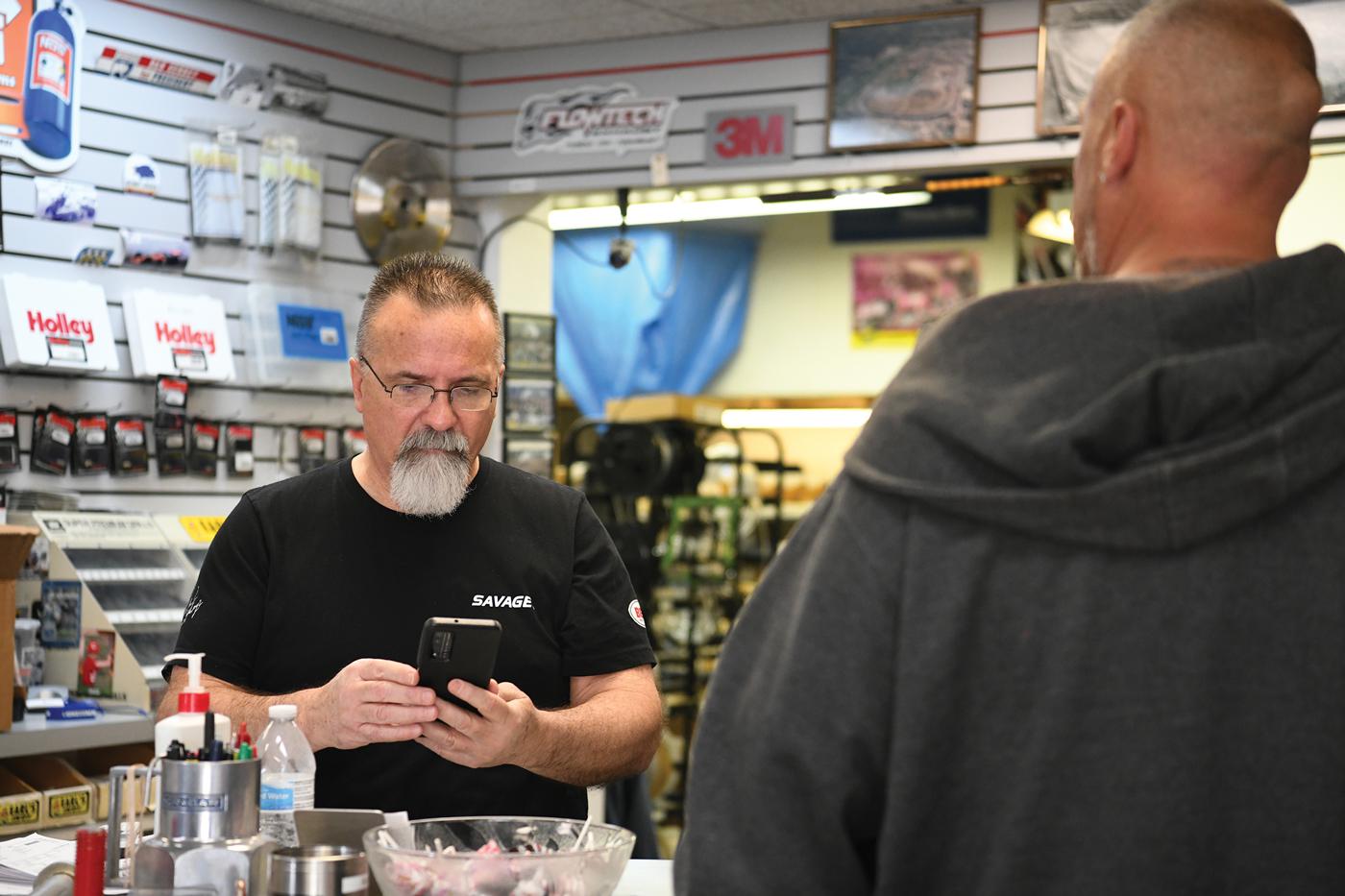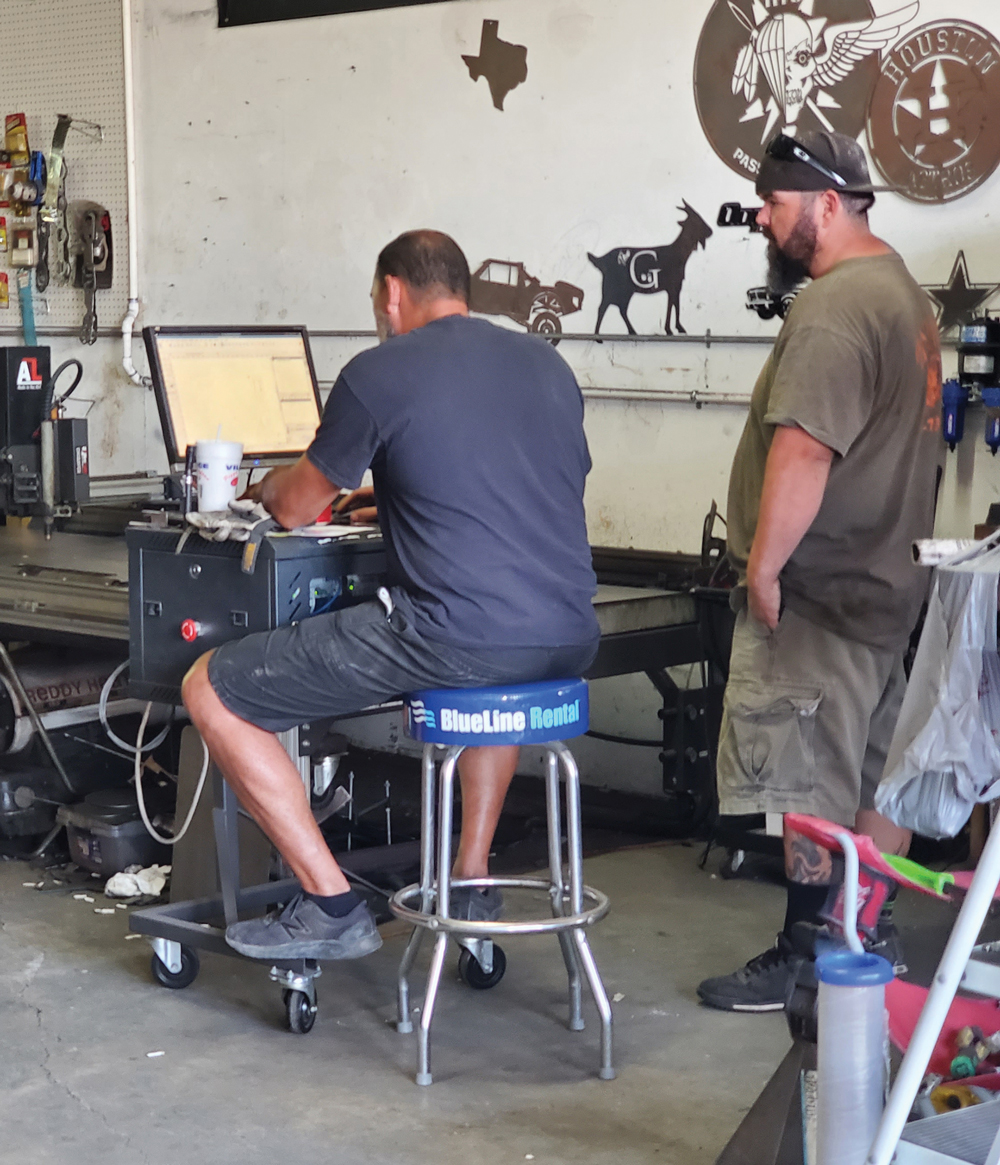Special Report: The Changing Landscape of Customer Service

Social media has become a dominant form of communicating throughout many industries, and now it’s increasingly a means of handling customer service. But is that effective for motorsports businesses?
Business is a lot like racing—constantly evolving, relentlessly competitive, and always taking advantage of the latest technology to get an edge. It’s no surprise then that more companies in motorsports and the performance automotive aftermarket are tapping into social media as another method of addressing customer service.
While traditional avenues such as emails and phone calls are still used to address customer inquiries, the advent of social media has provided companies with a powerful tool for communication and customer service. It’s allowing motorsports companies to build better rapport with customers, strengthen brands, and trigger positive conversations among other potential customers who are witnessing the effective resolution of issues.
But on the flipside, there’s also the potential for negative effects. Customer expectations are rising higher than ever, which can prove challenging for companies that haven’t adequately prepared, or don’t have the necessary resources to accommodate customers through additional channels. And, at the same time, the multi-faceted nature of social media communication can strain centralized, chain-of-command driven teams that struggle to devote resources to other departments when necessary.
Given these opposing dynamics, the methods and the degree of commitment to social-media customer service varies widely in motorsports. Some companies have jumped in wholeheartedly, some are dipping a toe in it, and some are avoiding it altogether. And even for those that are embracing it, there’s a wide range of methods and expectations being applied to the task.
Nonetheless, social-media customer service experts are looking ahead to a bright future for these platforms in the industry, particularly with the advent of powerful new labor-saving social-media tools driven by AI technologies. These tools could lower the barriers that are keeping some companies from diving into social media as a means of improving customer service.
Customer Service Evolution
Social-media customer service has evolved considerably in its relatively brief history. Many of the first forays into using social media to communicate with companies came from angry customers taking a last-resort shot at unresponsive businesses in a public forum. But over time, social-media customer service has evolved into a nuanced give-and-take between customers and companies. The topics of these exchanges can be almost anything, including general questions about policies, deep details about products, or even gushing praise from loyal zealots.
Use of various social media platforms in these ways had been steadily growing for years as people in general were spending increasing amounts of time in front of phones and computers, while doing more and more of their business transactions online. Then the pandemic kicked that trend into high gear. With limited means for contacting companies and people spending more time in front of computers during the two-year-long international ordeal, customers began flocking to Twitter, Facebook, Instagram, and other platforms to voice their needs to companies with which they did business.

Besides the undeniable global factors that have fueled customers’ expectations of social media as a medium for communicating with companies, there’s a more fundamental reason customers increasingly use social media in this way. Today’s social media platforms convey a greater sense of there being a real person behind the scenes, compared to the coldly anonymous feeling of a blank email contact form, or an impersonal-looking 800 number listed on a website. The basic sense of humanity on social media tends to encourage customers to use this channel instead of the more traditional email and phone methods.
“I think there’s an understanding that social media has to have a person behind it, unlike an email form, which you don’t really know if it’s actually going to a person,” said Andreanna Ditton of RacingJunk.com, El Segundo, California.
Handling customer service through social media allows companies to reach customers where they’re already at, in a means that they’re comfortable with. This fosters a greater sense of trust and openness among customers. This trust is further enhanced by the experience of seeing other customers successfully having their problems with a company resolved on the platform. This creates a powerful social proof that can foster positive feelings toward a brand and build enduring loyalty.
“There have been studies done that have showed that the overall feeling about that business goes up when people see a problem resolved for a customer,” explained Corey Perlman of Impact Social Media, Roswell, Georgia. “The reason for that is people don’t expect businesses not to make mistakes—they just want to see how the company is going to respond to those mistakes.”
Platforms for Work and Play
Although almost any social media platform is potentially suitable for customer-service interactions, in motorsports and the performance automotive aftermarket the dominant social platforms are Facebook and Instagram. These platforms have become the default standard for car culture, whether it be in the form of videos, cars for sale, or posts about automotive topics. This has fostered a vast audience of deeply enthusiastic users for these platforms, and so they’re naturally the place companies in this segment need to be when handling customer service through these channels. For automotive-related companies of all types, platforms other than these two stalwarts tend to be too much effort for too little return, according to our sources.
“For our audience, Twitter was a bigger job than we were able to maintain, and we didn’t gain much from it,” said Ditton. “We still have a Twitter account that people can connect with us or tag us on. We use it to promote our ads, press releases, and stuff like that, but we don’t do a lot of discussion on it. Same with Pinterest.”

Within the car-culture world, Facebook and Instagram users have somewhat different tones and attitudes between the two platforms, driven in large part by the nature of them and the slightly older demographics of Facebook users compared to those of Instagram. But for the most part, the companies we spoke to said the difference in tone and style between the two platforms has become negligible at this point.
“The Facebook and Instagram audiences are more similar than you’d think these days,” said Ditton. “We used to see a much different demographic on Instagram than on Facebook. I just don’t see that quite as much anymore.”
Reaching Out
Whichever platform is used, customers have three basic methods to communicate with companies: Direct messages (DMs), posts, and tagging. Direct messages are the most private of these methods, and that brings advantages and disadvantages. When messaging a company directly, there’s limited damage to a company’s brand if the interaction is negative in any way. But, on the other hand, DMs have limited potential for enhancing a brand and building general goodwill if the interaction goes particularly well.
Instead of messaging a company directly, customers may also choose to simply put their thoughts in a post, for potentially everyone to see. In the extremes, this can have a very damaging effect if the post is negative, but it can also be a very positive lift for a brand if it’s in the form of praise for the company or its products.
The sources we spoke to said that it can be effective and efficient to communicate with customers via posts, but they agreed that the interaction should be moved to private DMs if things get at all negative. Everything is fair game for public consumption and comment when it’s in a post. For that same reason, sometimes company representatives need to dial down any negative emotions that can cloud the interaction.
“When a negative response or interaction comes from a customer, the first thing you do is not respond right away, because you’re emotional about it,” said Perlman. “Take a breath. Give it a little time until you can let go of the emotions and can respond in a diplomatic way. Then respond and try to fix the problem. Oftentimes, if you do that, you can turn a critic into a champion. You can turn an unhappy customer into a very happy and loyal customer just by listening and being attentive to them—even if the problem doesn’t necessarily get fully solved—just by being empathetic to their situation.
“But if you can’t, and this person is just looking for a fight, then that’s the point where you take it offline,” continued Perlman. “It’s best to say something like, ‘I’d like to personally talk with you through this. Please provide me your email,’ or ‘I’m going to provide our business email here so we can get your phone number and I’ll get in contact with you right away.’”

Besides messaging or creating a post that mentions a company directly, customers can also tag a company in a post. Doing so consists of simply putting the company name somewhere in the post, preceded by a hashtag. This can be done on any post, even if it’s only tenuously related to a company or its products. Like other methods of contact, this can be a positive, uplifting moment for a brand, or it can be damaging and negative.
That’s why it’s crucial for companies to continuously monitor what’s being said about them online. This technique is called social monitoring, or social listening. Although this is a simple concept, it needs to be done on a consistent basis so that damaging statements don’t spiral out of control, fueled by a perceived lack of response from the company. Fortunately, it’s relatively simple to manage the process and stay on top of what people are saying.
“One easy thing that companies can do to monitor is to set up Google Alerts around their brand,” said Perlman. “That way, if something pops up on the Internet with their name attached to it, they’ll be alerted by Google via email. Or, if you go to Twitter, or Instagram, or Facebook, or even LinkedIn, you can simply type in your brand name in the search bar, and you very quickly can see if anything’s been mentioned about you.”
The companies that are the most effective at social-media customer service typically have a specific social monitoring methodology that ensures that job is handled thoroughly and consistently. Bringing greater efficiency and effectiveness to these methods are a number of digital tools that automate the work and provide greater control of the process. But businesses have to be careful to maintain the valuable human component that attracts customers to social media in the first place.
“It all comes down to being authentic,” said Perlman. “One of the big questions now is whether businesses should use automatic responses or artificial intelligence services. My thinking on that is yes, as long as you aren’t trying to pull the wool over the eyes of the customer—you’re not trying to make them think it’s a real person. Commonly asked questions, and requests that come in after hours, can be addressed by automated programs. But when you get to a point where it’s more specific, you need to get the customer over to a real person.”
These digital methods are typically just one component in a comprehensive suite of effective techniques organizations are using to handle customer service via social media. It’s essential to establish a solid, consistent process for handling social-media customer service. Without such systems, the chances of customer interactions turning negative greatly increase. But such a system doesn’t necessarily need to be complex or especially sophisticated. It can be as basic as having a set time of day to handle certain important tasks.
“If you try to handle customer questions sporadically, you’ll get lost,” said Will Farkas of Design Engineering Inc. (DEI), Avon Lake, Ohio. “You’ve got to really make sure to dedicate time each day to making sure that you are able to cover it. I check things once in the morning, once at lunch, and then once at the end of the day.”
Different Modes for Different Folks
For the most part, opening up social media channels for customer service questions is largely a matter of companies simply going where their customers are. But that varies considerably from one market segment to another. To some degree, it comes back to demographics. The enthusiast automotive market in general tends to skew somewhat older in comparison to certain other mainstream products, such as music or video games.
Although older users can certainly be technologically savvy and quite sophisticated in their use of digital devices, they nonetheless often prefer traditional means of communicating with companies. For this reason, the companies we spoke to all emphasized the need to offer multiple channels for communicating with customers. “In our posts and our direct messages, we always have a way to call us,” said Ditton. “So as soon as they message us, it gives them a phone number for customer service.”
Despite the challenges posed by handling customer service problems through social media, it shouldn’t be a cause for fear or hesitation. Instead, our sources say companies should jump in and embrace it as just another opportunity to connect with customers.
“One time a client said to me, ‘Why should I have social platforms just to give people another reason to talk about me or my business?’” said Perlman. “But that’s exactly the reason why you have this social platform—so that they’ll talk about you on your own turf. I would prefer a negative customer come to your social platforms for communicating with you than going elsewhere, like Yelp or Google.”
Counterpoint: Ignoring Social-Media Customer Service
Although motorsports and performance automotive aftermarket companies appear to be generally embracing the idea of handling customer-service inquiries through social media, some in the industry have intentionally turned their back on these methods. At first glance, such a move might appear to be unfashionably out of step. But, on closer examination, the argument can be made for such a policy in some businesses.
This is particularly true for companies with proprietary platforms that customers use to place orders, check status, and communicate problems. Such businesses may feel that monitoring and working customer service on channels outside the company’s existing platform is an unnecessary distraction.
Turn 14 Distribution in Horsham, Pennsylvania, is one such company. At one point, the company did allow the option of working with customers through social media, but ultimately decided that it wasn’t as effective as simply channeling those customers back to its own platform.

As a warehouse distributor, Turn 14 works only with established customers who have an account. This means that everyone it deals with is already registered and extensively documented in the company’s platform. When clients contact Turn 14, the customer support team can instantly access all of this information in one centralized location. This has proven to be more efficient than jumping back and forth between a social-media platform and the company’s own platform.
“We have a full-fledged team of 30 to 40 customer-support employees,” said Kyle Crawford. “And we have a whole portal and ticketing system that they use to deal with any kind of customer support requests. We learned pretty quickly that the time that it took us to figure out the order number, or where the part was going, or who it was going to, and then passing that information along to our support team, made it slower than what our support team would have done if they processed a ticket through our system.”
If Turn 14 customers do ask questions through social media, they’re steered back to the main company platform, where they interact directly with a member of the customer-support team. Because of the efficiency and thoroughness this method provides, customers are generally fine with being routed away from social media, according to Crawford.
“We started replying to social-media messages with a pretty generic response that says, ‘If you have a Turn 14 Distribution account, this should be handled through the support channel. If you don’t have a Turn 14 Distribution account, you should work through the retailer that you purchased the part from.’”
At the same time, Crawford said that staying exclusively on the company’s own platform provides greater security for the company and its customers. “One of the reasons we want people to work through our system is that we don’t want any of the information going into the wrong hands. By having access to the ship-to address and knowing what the part number is, sure, theoretically we could look that up in our system, but we don’t know who we’re actually giving that information to. So by it going through our main channel we keep things secure.”
Of course, ignoring social media as a customer service method may not be advisable for all companies. Many customers, particularly those of younger generations, see Facebook, Instagram, and other social platforms as an integral part of life online. But for companies like Turn 14, which has its own robust one-stop platform for serving customer needs, turning away from social media may indeed prove to be a viable option. —David Bellm
Sources
Design Engineering Inc.
designengineering.com
Impact Social Media
impactsocialmedia.com
RacingJunk.com
racingjunk.com
Turn 14 Distribution
turn14.com
 MEMBERSHIP LOGIN
MEMBERSHIP LOGIN JOIN PRI
JOIN PRI


